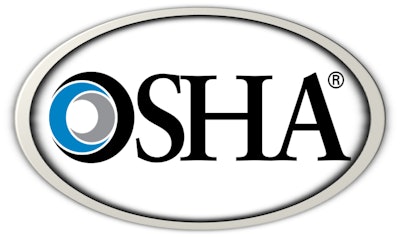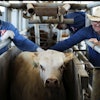
Federal labor officials last week announced new regulations designed to protect workers from occupational exposure to silica dust.
The Occupational Safety and Health Administration estimates that 2.3 million U.S. workers are exposed to crystalline silica dust on the job, including 2 million construction workers that cut silica-laden materials such as concrete and stone.
The dust contributes to silicosis, an incurable and progressive lung disease. Officials said that the new standards — updated for the first time in 45 years — would prevent more than 900 new silicosis cases and save more than 600 lives each year.
They also said that the rule would curb lung cancer, COPD and kidney disease among those workers and provide net benefits of $7.7 billion annually.
"Every year, many exposed workers not only lose their ability to work, but also to breathe," OSHA chief David Michaels said in a statement. "Today, we are taking action to bring worker protections into the 21st century in ways that are feasible and economical for employers to implement."
The rules, in part, reduce the average eight-hour exposure limit for silica dust to 50 micrograms per cubic meter of air and require companies to implement procedures to reduce worker exposures.
Most employers, the agency said, can use ventilation systems to capture dust or spray water to keep dust from becoming airborne.
In cases where those controls are not available, companies would need to provide respiratory protection, train workers, limit access to high exposure areas and provide medical exams to highly exposed individuals.
Employers in the construction industry will need to comply with the rules by mid-2017, while others will have an additional year to conform. Additional time will be providing for oil and gas fracking operations to install dust controls.
"The rule provides flexibility to employers, giving them room for creativity and options for different ways to achieve compliance," wrote Labor Secretary Tom Perez. "We were very careful to make sure this wasn’t a one-size-fits-all approach."






















